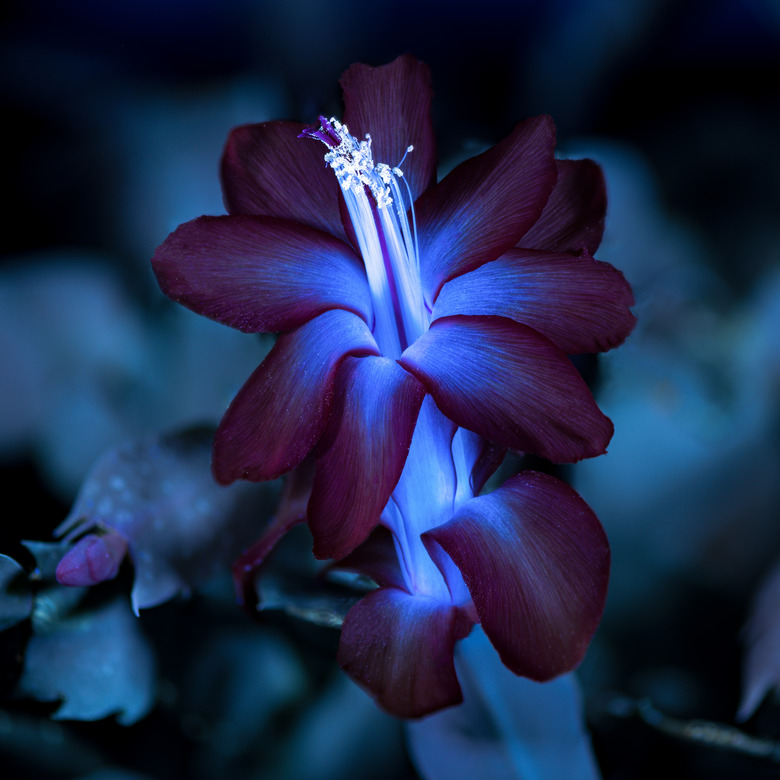The Effect Of Black Light On Plants
UV stands for ultraviolet light. It is a light invisible to the human eye as it has a shorter wavelength than visible light. UV light for plants is very important as it helps them grow. Horticulturists sometimes supplement the light plants receive from the sun with artificial lights such as black lights.
Are Black Lights UV?
Are Black Lights UV?
Black lights emit a type of UV light called UVA. The UVA black light wavelength ranges between 315 and 400 nanometers. There are two other types of UV light that are defined by their radiation wavelengths. The wavelength of UVB light is 280 to 315 nanometers, and UVC light is 100 to 280 nanometers. Most of the UVB and UVC radiation coming from the sun is absorbed in the Earth's ozone layers.
Benefits of UV Light on Plants
Benefits of UV Light on Plants
Plants do not use UV light for photosynthesis, but UV light does affect their growth and development. For example, when field mustard (Brassica rapa) was grown under black light with minimal fluorescent light, plants were shorter and thicker, had larger leaves and never grew flowers compared to those grown under the fluorescent light. The larger, waxier leaves result from growth of the plant cuticle – the outermost layer of cells on their leaves. One advantage of this thickening is that it may help plants leaves resist being eaten by pests.
UV light can also affect plants' leaf coloration, especially plants with purple leaves. Plants such as purple lettuce (Lactuca sativa var), millet (Panicum spp.) or fountain grasses (Pennisetum setaceum rubrum) tend to have more purple on them when grown under UV light.
As well as being more colorful, exposing plants to controlled levels of UVA light increases their nutritional value and stimulates biomass accumulation, which is the leaf volume across a specific time. Though UV light doesn't increase the rate of photosynthesis, the larger leaves further assist growth, as there is more area for photosynthesis to occur.
Plants also use the reflection of UV light on their leaves and flowers to communicate with and guide insects that pollinate them. Exposure to UVB light enhances the reflective abilities of plants. Plants deprived of UVB light lose much of their reflectance capabilities within a few days.
Cellular Damage from UV Light
Cellular Damage from UV Light
Exposure to UVA light only benefits plant growth to a point. Just like in humans, excessive UV light exposure can cause damage to genetic material. Within minutes of being exposed to this environmental stressor, plants enact physiological defenses to start protecting themselves. These defenses include increased production of antioxidants and flavonoids, which help absorb damaging light and repair cellular damage.
While low levels of UV light helps plants to produce these natural sunscreens, high levels of UVA light damages many cells, which interferes with photosynthetic processes, overwhelms biological coping mechanisms and reduces growth.
Horticultural Uses of UV Light
Horticultural Uses of UV Light
Too much UV light can burn leaves, weaken their natural pest defenses and kill plants. Therefore it is crucial that horticulturists find the proper exposure levels to benefit plants rather than harm them. Finding the correct level of UV light is highly beneficial as it may help horticulturists grow plants with higher resistance to crop-damaging pests. In addition to plants having thicker leaves that are harder for pests to damage, the faster growth may be enough to overcome any pest damage.
Controlled bursts of UVB light have the potential to control microbial pathogens on plants, as people commonly use it for decontaminating water and surfaces. Manipulating UV light levels could also be an effective tool for pest control by confusing insects that use UV light signals on plants to move around. Controlling pests through UV light applications minimizes the need for harmful pesticide use.
Cite This Article
MLA
Jerrett, Adrianne. "The Effect Of Black Light On Plants" sciencing.com, https://www.sciencing.com/the-effect-of-black-light-on-plants-13428524/. 20 October 2021.
APA
Jerrett, Adrianne. (2021, October 20). The Effect Of Black Light On Plants. sciencing.com. Retrieved from https://www.sciencing.com/the-effect-of-black-light-on-plants-13428524/
Chicago
Jerrett, Adrianne. The Effect Of Black Light On Plants last modified March 24, 2022. https://www.sciencing.com/the-effect-of-black-light-on-plants-13428524/
